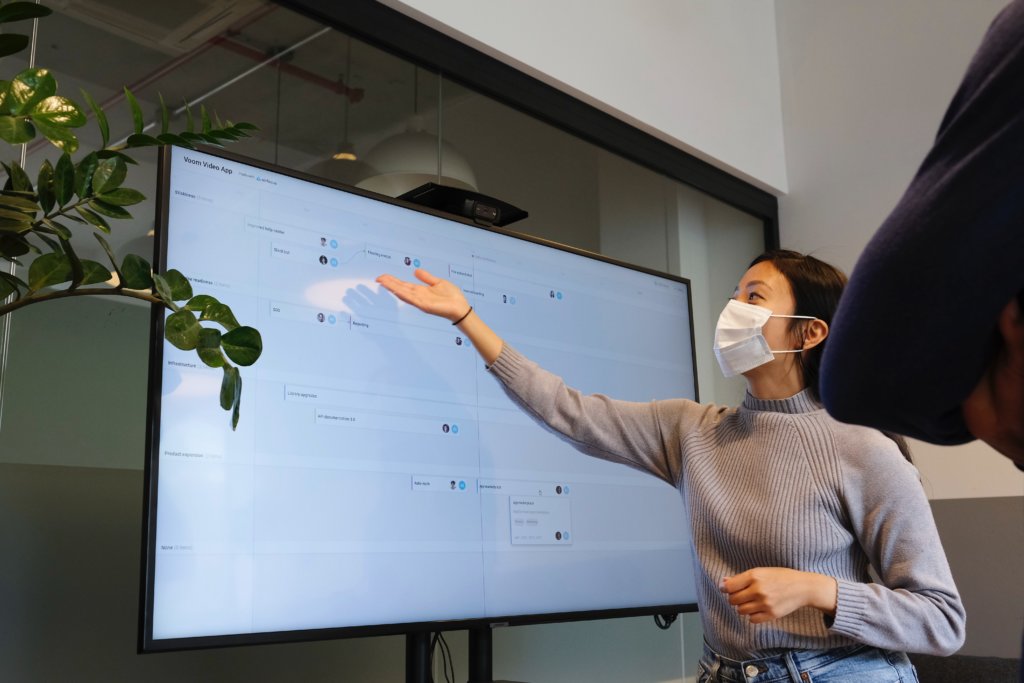Moving the Needle – Brandon Bussy – RevOps Rockstars Podcast
As a RevOps leader, your objective is to support revenue generation. You must understand what’s moving the needle and how to build a RevOps team to hit strategic milestones. Doing so in a turbulent economy and amidst demanding growth targets can a tall order for even the most seasoned veteran.
We sat down with Brandon Bussey, former SVP of Revenue Operations at Entrata on a recent episode of the RevOps Rockstars Podcast to hear his insights on driving RevOps success. Hosting the discussion are Jarin Chu, VP of Marketing, and David Carnes, Founder & Chief Evangelist at OpFocus.
It’s time to hear from Brandon about how he measures success in his Revenue Operations team!
Listen on your favorite podcast app:
What is something in RevOps you had to learn the hard way?
Brandon has two lessons he wishes he’d known sooner based on his experiences. The first is born from his past in comp planning, but applies to a broader set of problems: don’t underestimate the importance of qualitative data when building models. An example he gives is developing compensation models to incentivize specific behavior. Using only quantitative data from past years, you won’t clearly understand how behavior will change since the data represents a model incentivizing different outcomes. Speak with colleagues and discuss their actions and what they’ll do differently based on your proposed changes. When creating new incentive structures, combining qualitative and quantitative data provides a complete understanding.
Brandon’s second lesson is setting clear expectations with the executive team and board. He presents the example of rolling out a new product, focusing on selling to new customers with a plan to sell to the existing customer base later. Without clearly communicating this strategy, leadership can have expectations that don’t align with how your team operates.

What does your title, SVP of RevOps, entail at Entrata?
Brandon tends to think about four key areas when building a RevOps team at an organization. The first consideration is your deals team, which is responsible for functions like deal desk and Salesforce CPQ. Brandon notes it’s critical to roll up to RevOps due to the extensive build-oriented operational elements. Keeping this function under RevOps is especially essential with Salesforce CPQ, which requires a specialized skill set.
Another aspect of Brandons’ RevOps teams is what he titles core operations which includes commissions, compensation, territory management, and all the operational considerations these include.
The third function of Brandon’s RevOps team during his time at Entrata focused on strategy and analytics. This team supports the GTM teams like Sales and Marketing, enabling those members to focus more on core functions. The strategy team also helps GTM leaders think about and plan their strategic vision. Brandon’s final team function is revenue enablement. These members translate priorities across the organization into sales motions.
Brandon on his role at Entrata: “It’s still evolving. And what I love is that you can adapt it to the needs of the company.”
Brandon Bussey, former SVP of Revenue Operations at Entrata
How do you measure success in your role at Entrata?
At Entrata, Brandons’ SVP of Revenue Operations role reports to the CRO. As a result, the two share success metrics. He supports the core corporate goals, which typically include a revenue growth target, productivity, and retention.
“I’m really focused on revenue growth, productivity, and retention. Helps your RevOps team focus by asking, “is what I’m doing going to move the needle on those three things?” Too often, we get enticed by really cool things like a new platform.”
Brandon Bussey, former SVP of Revenue Operations at Entrata
In addition to these three metrics, Brandon also tracks quarterly goals using the OKR (Objectives & Key Results) methodology, and keeps an eye on progress and contribution using OKRs. One thing to note when setting goals is never to do them in isolation. Brandon sends proposed plans to sales and customer success leaders and the CRO for input before finalization.
What in your role do you wish you’d done sooner?
When entering a new RevOps role, you’ll likely want to jump in and solve problems immediately. It’s who we are as RevOps practitioners. After a few months, you need to switch gears. Brandon recommends pausing and taking a step back to look at the organization. Plan out the organization’s path to success and map the steps to take the company where it needs to be.
“In RevOps, you’re always going to be understaffed and overworked; and that’s the case whenever you come into a new role.”
Brandon Bussey, former SVP of Revenue Operations at Entrata

How do you build a RevOps team and allocate resources between functional areas?
Entrata’s RevOps team currently has about 18 members between the four functional areas he outlined earlier. The deals team has two members, the core operations function has twelve, deal strategy has two, and enablement has two, although Brandon notes this is an area they’re actively expanding.
Last year this team modernized the tech stack, moving from a homegrown CRM to Salesforce and implementing tools like Groove, ZoomInfo, and Domo. The team is in “full build mode” for the next year or two. With so much ahead of them, the team has conversations not only about what this next year looks like, but also the next few years. These long-term initiatives empower Brandon to plan and build a RevOps team with the right skill sets to move the needle.

How we train the next generation of RevOps leaders to fill this need?
Brandon mentions an exercise he took part in at another company that speaks to this question. The exercise involved taking time to learn the role of another company member and rotating the position you’re learning each year. This rotation empowered the team to fill in for each other when necessary and gave them a more holistic understanding of the company. Pairing specific roles together, such as a member of the finance team with a member of strategy, makes this rotational program especially beneficial.
Developing your team in-house through learning sessions or opportunities to connect with leadership members for Q&A discussions are other ways to foster development. Giving members a forum to present projects to the broader team shares knowledge while developing presentation and public speaking skills. As more organizations adopt this approach, future candidates will have a more rounded skillset making it easier to build a RevOps team.
In your RevOps role, what cross-functional projects have you owned?
RevOps leaders often get called on for cross-functional projects since most have some form of GTM implication. While at Entrata, Brandon worked on a new pricing and packaging project, driving the go to market aspect. Creating product packages makes it easier for customers to understand their portfolio and increases the speed new sales reps can ramp. The product team manages the technical aspect of the project, and Brandons’ team coordinates how it’s rolled out. This point comes back to a previous topic of setting clear expectations and thinking about how they present this to new clients in instances where prices increase and what policies they introduce for discounting.
“In these cross-functional projects, the key is making sure you have clear communication and are pulling people in for the core decisions.
Brandon Bussey, former SVP of Revenue Operations at Entrata

What’s your experience interacting with the board at different-sized organizations, and how does this impact your preparation process?
At small companies or start-ups, there’s a belief that it’s ok for your board presentations to be subpar. Brandon mentions this is a mistake – the board presentation at an early-stage company should be the same quality as a Fortune 500 company. Presentations should showcase how you evaluate your business and the metrics that impact this evaluation. It’s crucial to ask the board what they want to get out of the discussion, especially when starting presentations. You should also leverage the board for advice on improving the company; it’s important to remember that they want the company to succeed.
“The purpose of a board meeting is that these people have invested money into you, and you’re explaining what happened and what we’re going to do about it.”
Brandon Bussey, former SVP of Revenue Operations at Entrata
Keep board presentations short, but be prepared for any questions they may ask. Brandon’s board deck is only 15 slides, but he has supplementary resources he leverages. Your CEO or another leader can likely tell you what questions or metrics the board typically asks. This information helps you prepare. A lot of this advice carries over to other leadership presentations.

What are your RevOps hot takes?
Brandon believes leaders have two conflicting priorities they need to balance. The first is doing right by their team members, and the second is doing right by the business. An initiative that benefits one too much may negatively impact the other. This divide becomes apparent when rolling out something like a new compensation plan. In this situation, he recommends sharing options with sales leadership to get their input and involve them in the process. Doing so makes them feel like they have a say in the changes and motivates them to drive adoption on their team.
What excites you about the future of RevOps?
For Brandon, the most exciting RevOps development is that the function is coming to the forefront in many organizations. RevOps leaders are increasingly involved in leadership team meetings and GTM planning. Being visible in the organization is a drastic change from when RevOps supported efforts, as Brandon describes, from the shadows.
Another exciting change is the number of people RevOps attracts from varying backgrounds. He notes the increasing number of candidates from top universities seeking RevOps positions and the impact on the community.

How did you get into Saas RevOps?
Brandon started his career in Financial Planning and Analysis because he wanted to be at the heart of the business. As part of this career path, he connected with CFOs but realized that was not a role he was interested in pursuing. Accounting is a large part of the CFO role, which Brandon realized made it the wrong role for him. He asked himself what he wanted in a role, which turned out to be identifying and solving problems and operations. After some soul searching, he met with members of the Qualtrics RevOps team, who walked him through how the RevOps function aligned with what he wanted out of a career. His finance background also fits nicely with the deal side of revenue, making it the perfect fit.
Expanding your professional career
It was great to hear from Brandon, who shared much about his professional expertise and thoughts on the RevOps community. There’s a wealth of knowledge for leaders to take back and implement in their teams! Connect with Brandon on LinkedIn or look at his former company, Entrata.
Joining us on the next session of RevOps Rockstars is Matthew Amadea, Head of Revenue Operations at Tigera. Catch up on the latest episodes on the RevOps Rockstars Youtube channel!
Listen on your favorite podcast app:


